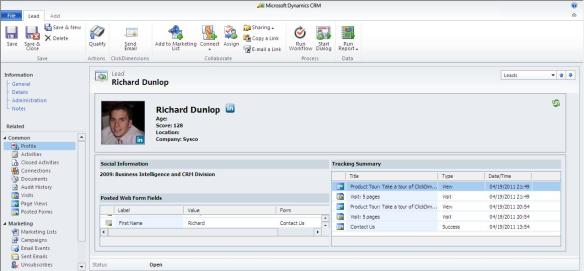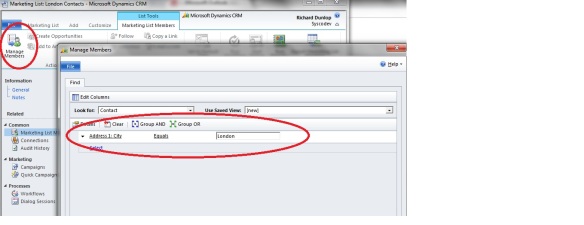One question I get asked a lot is about is the ability to track emails that are sent out, whether this is a monthly newsletter, direct marketing or just general sales related emails.
I researched a number of solutions but the one that stood out for me was a solution called ClickDimensions. In this blog post I will go through the areas I liked and how I feel this could drastically improve an organisations marketing strategy. Like I said, there are a number of options out there worth looking at and these opinions are just from my experience.
Some of the key out of the box marketing features Microsoft Dynamics CRM comes with allows users to:
- Create templates in word and store them centrally in Dynamics CRM
- Build marketing lists by segmenting your contacts (e.g. by location or role)
- Create campaigns with a number of activities (e.g. email campaign with a follow up call Xdays later)
- Assign tasks to other users so teams can work better together
- Assign budgets and monitor opportunities that come from the campaign to work out return on investment of marketing campaigns
- Track all responses to email campaigns from outlook and quickly create opportunities
- Track who receives marketing emails as well as having unsubscribe links to remove from future bulk email campaigns
These are all brilliant features to improve an organisations communications with its contacts and customers. However, I have had enquiries into extending this functionality…this has led me to research some of the options available. Below are some of the features of ClickDimensions that I feel complement CRM and can help take organisations to the next level.
Create HTML emails
ClickDimensions allows users to store HTML templates as well as creating ones from scratch in the inbuilt HTML editor within CRM. Quickly and easily users can create sophisticated emails with images, mail merge fields from CRM as well as links to their website that can be tracked (more on this later). Microsoft look and feel means that even inexperienced users can create these slick looking emails. Below is the HTML editor which can be viewed in full screen to make it easy to use:

Email Tracking
Users can create links within the email to point the recipient to more information on your website, and once they are on your website hopefully they will look at more of your services/products.
ClickDimensions tracks all emails that are sent, all those that are undelivered, all emails that are opened (unique opens and repeat opens) and clicks. Statistics can be displayed for each email campaign as shown below; there are also reports that list the contacts that clicked the links and which links they clicked:

With regards email marketing this solutions fills any of the gaps that out of the box Dynamics CRM has and will ensure that any marketing department has all the tools they need to deliver effective campaigns.
An additional benefit is that all emails are sent through ClickDimensions and not through your Outlook server so there is no effect on your performance and improves the deliverability of your emails; meaning your server will not be classed as a SPAM server and your recipients are more likely to read them.
Website tracking
Clickdimensions provides code that a system administrator places within the website. This allows Dynamics CRM to track and record all activity on the organisation’s website.
Dynamics CRM tracks the IP of any anonymous person who enters your website. It tracks their activities and how long they were on each page. This information isn’t too useful for marketers (although sometimes the IP address will give details of the company viewing your website) but this information is stored until the user fills out more details on the site…
When the anonymous person fills out a form on the website (this could be a contact us or to subscribe to a newsletter) Dynamics CRM captures this information instantly and assigns all the details (site visits, time spent on pages, items clicked etc) to this new site visitor. This creates a lead within Dynamics CRM and from here the user can see CRM information as well as Clickdimensions information. ClickDimensions also uses Social Discovery to find LinkedIn/Twitter/Facebook information to improve your knowledge about the lead.
A profile is created and marketers can use this information to improve their communication with the prospective customer. They will know what parts of their website they were interested in and how long they viewed the pages for. The lead in CRM will be given a score depending on the time spent on the website and the interactions they had.
Below is a profile of me (excuse the cheesy photo) that has tracked my interactions on the ClickDimensions website and has brought information in from my LinkedIn, as well as showing what pages I viewed and what forms I completed on the site.

These are just a few of the features but ones that I feel marketers could use to help sell more effectively. Some people may not like the idea of being tracked (and how an organisation uses the information is up to them), but I feel marketers can use this information to provide a brilliant service by understanding their customers/prospective customers better.
ClickDimensions is a solution from the Microsoft Dynamics Marketplace and has subscription based pricing as the solution is a service.
If you want to learn more about ClickDimensions just send me an email rdunlop@sysco-software.com or visit www.clickdimensions.com




